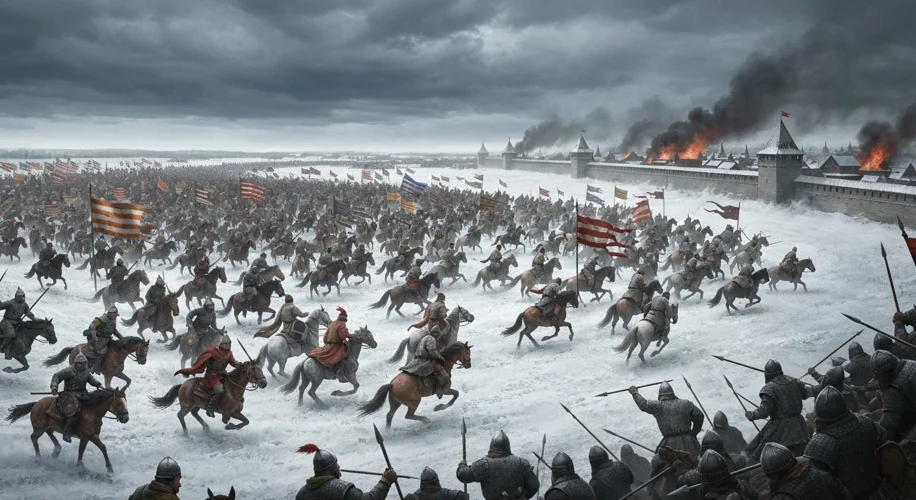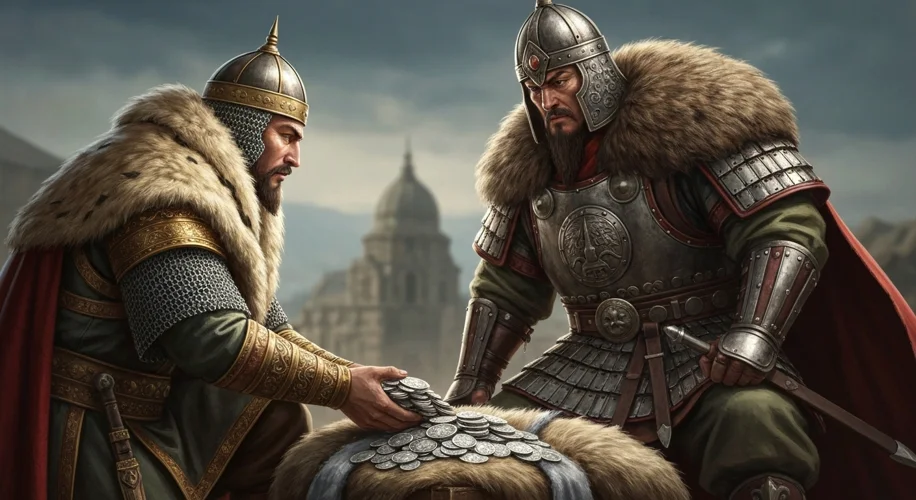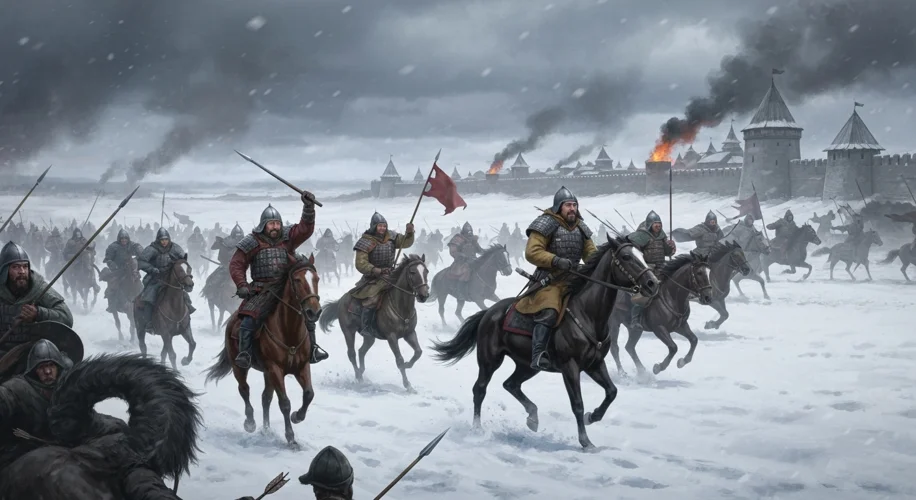The year is 1237. A chilling wind, carrying the scent of distant lands and an even more distant terror, swept across the vast plains of Eastern Europe. It heralded the arrival of an unstoppable force, a tempest of horsemen and steel that would forever alter the destiny of the Rus’ principalities and lay the foundations for a new geopolitical order. This was the dawn of the Mongol invasions, a cataclysmic event that plunged a vibrant region into centuries of subservience and reshaped the very identity of what would become Russia and Ukraine.
The Rus’ principalities in the early 13th century were a patchwork of competing city-states, a collection of feuding princes and burgeoning trade centers. Cities like Kyiv, Vladimir, and Novgorod, while possessing rich cultures and established trade routes, were politically fragmented. Their wealth, derived from agriculture, crafts, and their pivotal role in the “Route from the Varangians to the Greeks,” made them attractive, albeit vulnerable, targets. The fragmented nature of their defense, however, proved to be their undoing.
On the other side of the vast Eurasian steppe stood the formidable Mongol Empire, a unified force forged by the legendary Genghis Khan. By the 1230s, under the brilliant and ruthless leadership of Genghis Khan’s grandson, Batu Khan, the empire had set its sights westward. The Mongols were not mere raiders; they were master strategists, disciplined warriors, and terrifyingly effective siege engineers. Their nomadic lifestyle had honed their horsemanship and archery to an unparalleled degree, and their military organization was a marvel of efficiency. Their objective was clear: to extend the dominion of the Great Khan and to secure the empire’s western flank.
The initial invasions were swift and brutal. In 1237, Batu Khan’s army, estimated to be tens of thousands strong, descended upon the Grand Duchy of Ryazan. The city was besieged, and its defenders, outnumbered and outmatched, fought valiantly but ultimately fell. The sack of Ryazan was just the beginning. City after city crumbled before the Mongol onslaught. The Grand Principality of Vladimir-Suzdal, the Kievan Rus’ itself, and other principalities fell in rapid succession. The siege of Kyiv in 1240 was particularly devastating. The city, once a glorious center of Slavic civilization, was reduced to rubble and its inhabitants massacred. The sheer scale of the destruction was unprecedented, leaving behind a landscape of ruin and despair.

The immediate aftermath of the invasions saw the establishment of the Golden Horde, a western ulus (province) of the Mongol Empire, centered in the lower Volga region. The Rus’ principalities, devastated and demoralized, were forced to swear allegiance to the Khan and pay heavy tribute in the form of silver, furs, and other goods. This period, often referred to as the “Tatar Yoke,” lasted for over two centuries. The Mongols, while generally leaving the internal administration of the principalities to local princes, exerted significant political and economic control. The princes of Moscow, through shrewd diplomacy, strategic alliances, and a willingness to act as tax collectors for the Horde, gradually rose to prominence, consolidating power and eventually challenging Mongol authority.
The long-term consequences of the Mongol invasions were profound and multifaceted. Politically, the fragmentation of the Rus’ lands was exacerbated, and the rise of Moscow as the dominant power was a direct result of its relationship with the Golden Horde. The experience of centralized, autocratic rule under the Mongols may have influenced the development of autocratic tendencies in later Russian states. Socially, the invasions led to a significant demographic shift, with many skilled artisans and farmers killed or carried off. The economic devastation was immense, disrupting trade routes and hindering development for decades.
Culturally, the impact was more complex. While the Mongols brought destruction, they also facilitated the exchange of ideas and technologies across Eurasia. The East Slavic languages and cultures absorbed certain linguistic influences and administrative practices from the Turkic and Mongol peoples. The Orthodox Church, however, remained a powerful unifying force, often acting as a bridge between the fractured Rus’ lands and preserving their cultural identity.
The legacy of the Mongol invasions is still debated by historians. Some argue that the “Tatar Yoke” retarded the development of Eastern Europe, particularly compared to the Western European Renaissance. Others emphasize the Mongols’ role in creating a vast, interconnected Eurasian world that facilitated trade and cultural diffusion. Regardless of interpretation, the Mongol storm that swept across the steppes in the 13th century left an indelible mark, a scar on the landscape and in the collective memory of the peoples of Russia and Ukraine, shaping their political trajectories and cultural identities for centuries to come.

The Mongol invasions were not merely a military conquest; they were a crucible that reforged the political and social landscape of Eastern Europe. The centuries of Golden Horde rule, characterized by tribute, political maneuvering, and the eventual rise of Moscow, played a crucial role in the formation of the Russian state. Simultaneously, the impact on the lands that would become Ukraine, including the devastation of Kyiv and the subsequent absorption into other polities like the Grand Duchy of Lithuania, also shaped its distinct historical trajectory. The echoes of this era resonate even today, a testament to the enduring power of historical forces to shape nations and peoples across the vast sweep of time.

